The following marks the inaugural entry in a new and ambitious project: an overview of my favorite films from each year, starting with 2000 and working my way backward. Why? Because 2001 was the year I started my “Year in Horror/Bedlam” end-of-the-year overviews, so I’ll be filling in the years I missed, going back to 1980 (beyond that we’ll see). The formatting, you’ll find, will be a bit different from those of my previous listings, as I’ll be focusing on worthy films that have been discarded, underappreciated or ignored by the mainstream—30 of them, to be exact—and won’t be bothering with a worst listing. In keeping with the overall gist of this site, many of those films, you’ll find, are horror or cult related, but any sort of film is welcome provided it fits the abovementioned perimeters.
So with that out of the way, onto the year 2000. It may have been the start of the new millennium, but the movies of that year were far from auspicious. The big moneymakers included X-MEN, which instituted the superhero movie juggernaut in which Hollywood is now mired, as well as MISSION: IMPOSSIBLE 2, CAST AWAY, WHAT LIES BENEATH and THE PERFECT STORM. Not too many classics for the ages in that line-up! Even ‘00 releases that seemed quite cool at the time, like TRAFFIC, CROUCHING TIGER HIDDEN DRAGON, NURSE BETTY, THE WIDOW OF ST. PIERRE and SNATCH, are now looking pretty stodgy. But as promised, I’ve come up with some films that I feel are worthwhile, starting with #30 and counting down to #1…
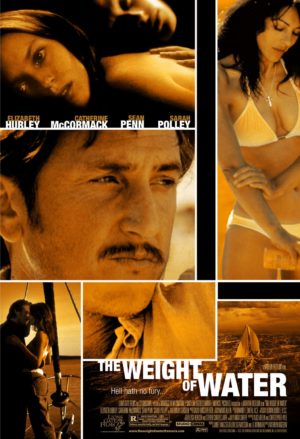 30. THE WEIGHT OF WATER
30. THE WEIGHT OF WATER
This film suffered widespread critical and audience indifference upon its initial release. Certainly it’s a tad pretentious, but I feel THE WEIGHT OF WATER is worthwhile overall. The director was Kathryn Bigelow, who relates, in time-tripping Nicolas Roeg-ish fashion, the story of a woman photographer (Katherine McCormack) obsessed with a century-old killing; she plans a vacation at the secluded site of the crime, together with her husband (Sean Penn), his brother (Josh Lucas) and the latter’s trophy girlfriend (Elizabeth Hurley). This situation mirrors that of the crime, which, as we learn through a succession of flashbacks, involved a dissatisfied young woman (Sarah Polley) surviving a rampage apparently precipitated by her husband. The film looks good, as I’ve come to expect from Bigelow, although the flashback sequences could have been stronger in terms of staging and design. The modern-day scenes are a bit better, especially since Ms. Hurley, who plays much of her role in a skimpy bikini, has likely never looked sexier onscreen.
29. BLACK AND WHITE
A sprawling live wire of a movie from writer/director/madman James Toback. BLACK AND WHITE has been largely forgotten, yet inspired a fair amount of disdain and outright anger back in ‘00, which makes it a must-see in my book. It’s something of a throwback to the improvisational dramas of past eras, being defiantly off-putting and following no rules of any sort. Of course, like those flicks of old, BLACK AND WHITE is often tedious and plain annoying. The subject? White teens, including Gaby Hoffman, Bijou Phillips, William Lee Scott and Elijah Wood, trying to emulate hip-hop culture in NYC, overseen by Robert Downey, Jr. and Brooke Shields as documentary filmmakers. Are these kids merely bored, overprivilaged twerps looking for kicks or do they have a deeper motive? That’s just one of the many questions this flick confronts, in the most in-your-face way imaginable. It’s just too bad Toback gets bogged down with a lame cops ‘n robbers subplot that only distracts from his thesis.
28. GOODBYE, 20th CENTURY! (ZBOGUM NA DVAESETIOT VEK)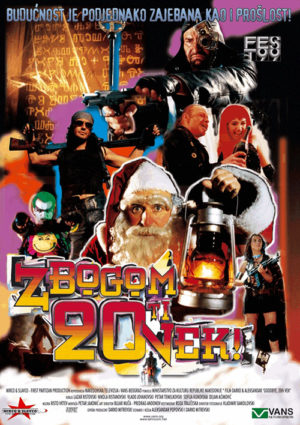
A culturally specific chunk of sheer weirdness hailing from Macedonia. Inspired, apparently, by that country’s folklore, it begins in a ROAD WARRIOR-esque post-apocalyptic landscape where a heroic warrior is shot by marauders—but doesn’t die. The action then flashes back 100 years in the past, only to finish on December 31, 1999, where the warrior of the early scenes, dressed as Santa Claus, becomes involved in a hotel room altercation that ends in mass carnage. What-all happens I’m not quite sure (the official synopsis dubs this “a film of a generation which has grown up and lives at the threshold of a war that neither begins nor ends…a visionary tale which condemns the decayed century to a very scary death”), but I can say that it’s impressively lensed, with heavily stylized camerawork that rarely ever stays still. There’s also an impressively kinetic shootout, set to Sid Vicious’ “My Way,” that provides a most diverting climax.
27. MONDAY
From the eccentric Japanese auteur Sabu (a.k.a. Hiroyuki Tanaka) comes a film that mixes Tarantino-esque comedic violence with David Lynchian surrealism to produce something altogether unique and unexpected. I wouldn’t call MONDAY great (as some have), suffering as it does from erratic pacing that often makes it difficult to sustain attention, but it is a compellingly individual concoction. It begins with an apparently amnesiac man (Shin’ichi Tsutsumi) waking up in a hotel room; gradually the memories of how he got there come back, memories that include an exploding corpse, some violent yakuza members and a deadly road rage incident. It all leads to a violent standoff with law enforcement, and a fatal confluence of dream and reality. MONDAY may contain, as some commentators have suggested, a serious message about the consequences of violence and its effects on Japanese society, but I found the experience of basking in Sabu’s consistently unpredictable black-humored strangeness to be reward enough.
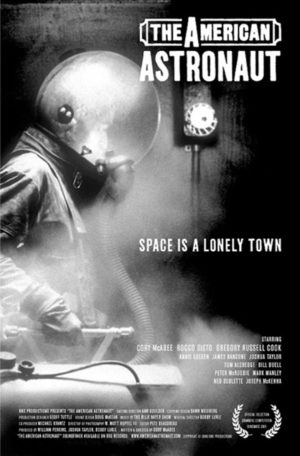 26. THE AMERICAN ASTRONAUT
26. THE AMERICAN ASTRONAUT
A low budget mega-oddity, a sci fi-comedy-musical-western. Written and directed by Cory McAbee (of the “legendary” band The Billy Nayer Show), it’s beautifully photographed in luminous black and white, yet contains virtually nothing in the way of special effects. That’s despite the fact that the action takes place largely in outer space and on Jupiter and Venus. There are lengthy dialogue exchanges, intentionally goofy musical numbers, people turned into piles of sand and enough low-key weirdness to give David Lynch a serious run for his money. The whole thing had me scratching my head throughout, but held my attention nonetheless with its audacity and sheer strangeness. This is one of the few films about which I can honestly say there’s nothing else remotely like it.
25. TIMECODE
A film that was once the most innovative thing around then quickly became a hopelessly dated relic, only to wind up as, unexpectedly enough, an irresistible nostalgia fest. It’s a largely improvised ramble in which a number of famous folk (Selma Hayek, Jeanne Tripplehorn, Stellan Skarsgard, Saffron Burroughs, etc.) wander around a portion of Sunset Boulevard, with some gratuitous sex and a last-minute killing thrown in to sustain interest. It may have been intended as some kind of commentary on modern-day Hollywood, but if so that commentary never registers. TIMECODE’S main selling point, of course, was the way it was filmed and exhibited: in four simultaneous takes, with the screen divided into quadrants so we can experience each portion at once. Obviously that gimmick seemed a lot cooler back in ‘00 than it does now, but watching this film is great fun due to its verite presentation of Sunset Boulevard twenty years ago, complete with several since-shuttered landmarks (such as the iconic Tower Records building and Spago restaurant).
24. BRAWLIN’ BROADS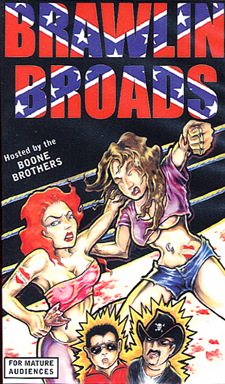
I not a huge fan of films purporting to show actual fighting and/or death, but there’s an undeniable train-wreck fascination in this hour long compilation of woman-on-woman brawls, broken up by wildly sexist and profane commentary from a pair of redneck goofballs. The latter call themselves the Boone Brothers, and are seen guzzling beer, smoking pot and giving stats on the fighters, whose backgrounds aren’t exactly surprising: most of these gals, we learn, are high school dropouts, and one was flunked out of home schooling by her own parents. As for the fights themselves, they’re quite brutal, with a great deal of punching, hair-pulling and naked aggression by scantily dressed ladies who really appear to hate each other. If one video can be said to define the term white trash it’s this one.
23. DETERRENCE
I love nuke movies, so I couldn’t help but enjoy this flick about a future president who gets stuck in a secluded diner as World War 3 breaks out. He gets a lot of un-asked for advice from the colorful band of rednecks populating the diner, but eventually makes a decision based on a last act twist. Kevin Pollack is surprisingly effective as the President and Timothy Hutton equally strong as his chief advisor, while Sean Astin makes a sizeable impression as one of the diner’s more vocal patrons. First time writer-director Rod Lurie, unfortunately, doesn’t do nearly as well, always trying to punch up scenes with gratuitous moving camerawork and bombastic muzak, and the whole thing is never as suspenseful as it means to be. DETERRENCE is nonetheless a likeable and engaging bit of fearmongering, and remains Lurie’s most memorable film.
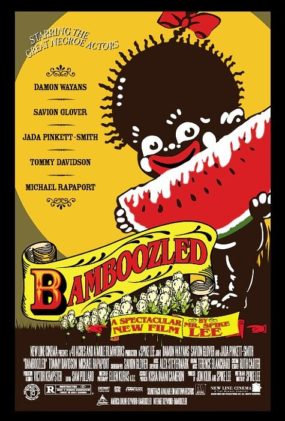 22. BAMBOOZLED
22. BAMBOOZLED
Sledgehammer satire from Spike Lee, with TV writer Damon Wayans, who hates his job, concocting a program he’s sure will piss everybody off and bomb. The show is a revival of the minstrel shows popular in the early twentieth century, complete with outrageous negro stereotypes, a plantation setting and the entire cast performing in blackface—and, inexplicably enough, it becomes a surprise hit (though from what we’re shown of the program it’s unclear why). The minstrel scenes are ugly, degrading and sad, just as they should be, but are allowed to drag on far too long, and an extraneous subplot involving gangbangers further muddies the water. BAMBOOZLED remains vital, though, for its fearless, go-for-broke spirit, and also for the closing montages showcasing America’s fascination with dehumanizing “coons” via scenes from old movies (including the sobering sight of Mickey Rooney and Judy Garland putting on blackface) and racist collectibles from years past (like dancing statues and “Nigger Banks”).
21. DENTI (TEETH)
This indescribably tripped-out concoction is an unholy—though quite fascinating—mess. Directed by the skilled Italian horrormeister Gabrielle Salvatores (I’M NOT SCARED), it’s the wacky account of a dude (Sergio Rubini) born with abnormally large incisors. He tries to destroy his teeth on more than one occasion, and nearly gets his wish when, in a fit of anger, his girlfriend (Anita Caprioli) chips one of ‘em with an ashtray. From there Rubini visits a succession of dentists, none of whom are able to do much for his poor mouth, while suffering from mass hallucinations and convinced that his GF is cheating on him. Salvatores directs in EXTREMELY slick, stylish fashion, even though he can’t seem to make sense of the story (if there even is one). What held my attention was the near-constant stream of fantasies and hallucinations: a woman walking on a ceiling, a tango performed at the bottom of a glass, a reptile girl who can walk in and out of mirrors, etc. It also contains what is certainly the most unrelenting series of nauseating dental close-ups (drilled teeth, scraped gums, etc.) I’ve seen in any movie.
20. ELECTRIC DRAGON 80.000 V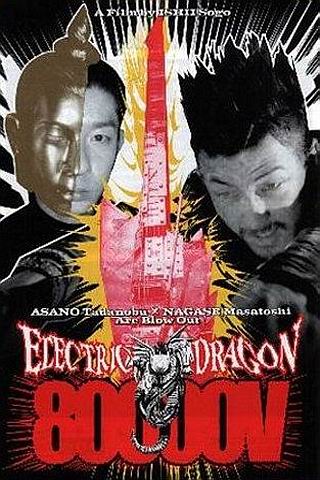
An unfettered 55-minute blast of cyberpunk insanity from Japan’s brilliant Sogo Ishii (ANGEL DUST). The pic appears to have been inspired by the work of fellow countryman Shinya Tsukamoto (TETSUO in particular), but then, Ishii was making such films long before Tsukamoto. Shot in luminous black and white, ELECTRIC DRAGON 80.000 V is about a dude (Tadanobu Asano) who as a kid was zapped with electricity, which somehow granted him supernatural powers. As an adult he undergoes a number of painful tests by demented researchers before meeting up with another guy (Masatoshi Nagase) with similar powers, against whom he eventually squares off in a wild electricity-powered showdown. With its unrestrained camerawork and frequent video game inspired special effects this is fun stuff, even if it ultimately brings nothing to the table that Tsukamoto (and Ishii himself) didn’t already.
19. BROTHER
This was Takeshi Kitano’s sole English language outing, and apparently the film of his that he likes the least. I, however, found BROTHER to be a harsh yet endearingly quirky depiction of underworld politics that’s very much in keeping with Kitano classics like SONATINE and OUTRAGE. It features Kitano, a.k.a. “Beat” Takeshi, as a yakuza in flight from his fellows in Japan (English language this movie may be, but much of it is in subtitled Japanese), who want him dead. Taking up with his brother in L.A., Kitano establishes his own gang and takes on the local mafia, with apocalyptic results. The violence here is fairly extreme (in the Japanese version at least), indeed unusually so even for Kitano. I’m certainly not complaining given Kitano’s skill with cinematic mayhem, although I will bitch about the bad performances by the English speaking cast (Omar Epps as Kitano’s sidekick aside), whose awkward line readings show the director’s unfamiliarity with the language.
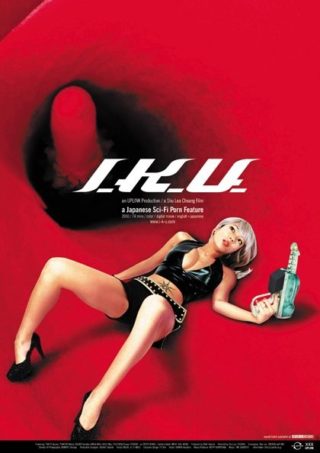 18. I.K.U.
18. I.K.U.
A truly baffling creation, this is a Japanese sci fi-porno feature about a future world where a replicant woman runs around assuming different identities so she can gather information for some reason or other. Beyond that I’m unclear on the story (or lack thereof), as the film is a jumble of sex scenes (hetero and otherwise) spiced with pervy CGI additions (hands turning into penises, etc.) and digital readouts providing further info on the film’s already overstuffed sci fi universe. How odd is I.K.U.? The DVD shuts off after about an hour and then offers up a special menu viewers have to access in order to view the ending! In addition, there are constant references to BLADE RUNNER, meaning this film may be intended as a sequel to or parody of Ridley Scott’s classic. Director Shu-Lee Cheang, best known as a conceptual artist, clearly took the proceedings seriously, which is a prime reason I stayed with the flick—the oft-startling digital photography was another. I.K.U., BTW, is apparently what Japanese people say when they orgasm.
17. TORONTO FILM FESTIVAL 25th ANNIVERSARY PRELUDES
A collection of ten short films, made to celebrate the Toronto Film Festival’s 25th Anniversary. Virtually all of Canada’s top filmmakers participated, resulting in an amazing line-up that includes Don McKellar, David Cronenberg, Patricia Rozema, Jeremy Podeswa, Michael Snow, Guy Maddin and Atom Egoyan. Maddin’s HEART OF THE WORLD, a superbly realized surreal comedy done in the filmmaker’s signature mock silent movie style, is easily the standout. I also enjoyed Rozema’s contribution, a beguiling projection booth romance shot in gorgeous black and white. On the downside is Cronenberg’s segment, an uncharacteristically sentimental tale of an old man whose life is invaded by a bunch of kids with a movie camera. Egoyan’s film, meanwhile, is essentially an extended commercial for the fest, while McKellar’s is comprehensible only to longtime festival goers, and Snow’s is concerned primarily with a slow pan around a room.
16. LIES (GOJITMAL)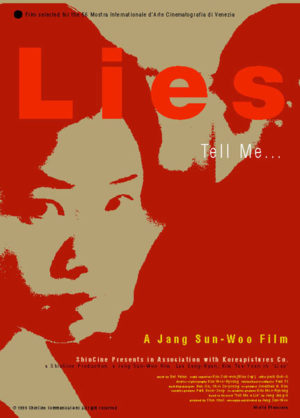
From Korea, a near-pornographic S&M-fest that caused a major stir on the festival circuit and freaked out countless critics. Naturally, I quite enjoyed it! The plot? A middle-aged yutz (Sang Hyun Lee) becomes immersed in a lascivious affair with a much younger woman (Tae Yeon Kim), an affair that goes from straight sex (though with an unnatural emphasis on asshole-licking) to B&D quite rapidly, until these two nutcases quit their jobs and simply drift from hotel to hotel, blissfully pounding the shit out of each other. Featured is a great deal of explicit sex and brutality that drew quite a few gasps from the audience I saw it with. Clearly inspired by Nagisa Oshima’s IN THE REALM OF THE SENSES, LIES shares a number of that film’s flaws: much repetitive action and an overlong running time, but it is quite a spectacle for those who can handle it. Warning: the version of this film currently streaming on Amazon was shorn of over an hour’s worth of footage, and is said to be unwatchable, with the full 115 minute version contained on the out-of-print Fox Lorber DVD.
15. BREWSTER MCGEE
This black and white Canadian no-budgeter is a funny, profane and disarmingly thoughtful little film, even though it makes THE BLAIR WITCH PROJECT look like LAWRENCE OF ARABIA from a budgetary standpoint. Regarding writer/producer/director Ross Munroe’s claim that the film cost $50,000, I can’t help but suspect that (recalling Chris Rock’s famous put-down of BWP) somewhere somebody’s running around with $49,000! Still, it’s neat the way Munroe plumbs weighty issues like loneliness, alienation, loyalty and betrayal within a scant sixty four minute running time and just two locations: a fast food joint and a car parked outside. In the car are Brewster McGee, a motor-mouthed blowhard looking to patent the phrase “Son of a fuck” and his stoner buddy Malcolm, who manage to draw Oliver, a lovesick fast food drudge, into their orbit. But Oliver spurns their affections in favor of a suicidal co-worker, inspiring Brewster to take revenge. It’s Brewster’s presence that really galvanizes this film; nicely rendered by Guy Maddin regular Brent Neale, he’s an abashed shithead from start to finish whom Munroe thankfully never sells out. The film overall is good enough to inspire hope for the future of independent filmmaking in North America, although the fact that it was never officially released (the filmmakers ended up distributing it themselves) does give one pause.
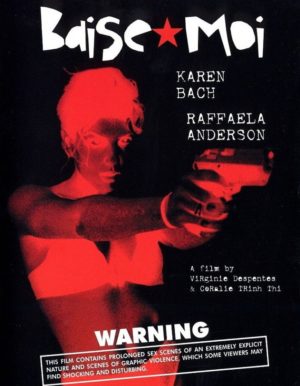 14. BAISE-MOI
14. BAISE-MOI
By far the most controversial film of 2000, a lean, mean 77-minute mind-roaster from France. It was given an X rating in its native country and banned outright in at least one Canadian province; Canada, as it happens, was also the region where an enraged patron stormed the projection booth of a Montreal theater and made off with the film, later threatening to bomb the place if they ever showed it again. For once all the furor is justified: this is unquestionably one of the most vile, grotesque and plain offensive movies I’ve ever seen. Freely utilizing hard-core sex and ultra-graphic bloodshed, it’s a depraved variant on THELMA AND LOUISE, with two penniless porno actresses (Karen Lancaume and Raffaela Anderson) embarking on a cross-country killing spree after they’re brutally raped (in quite possibly the most nauseating scene ever committed to celluloid). Shot in grainy handheld digital video, BAISE-MOI forsakes the hollow feminism of T&L (the ladies in this movie kill because they enjoy it), as well as the pretensions of the previous year’s “ground-breaking” French fuckfest ROMANCE (these gals are a far cry from that flick’s contemplative middle-class heroine). It has its flaws, certainly: too many elements clash with the gritty veneer (the awful travelling matte shots in particular), and the inconclusive ending could definitely use some work. I’ll have to give BAISE-MOI credit, though, for being such so unapologetically confrontational.
13. LA COMMUNE [PARIS, 1871]
LA COMMUNE is an exhausting black and white mock documentary by England’s ever-iconoclastic Peter Watkins, here working for French television. Many critics have proclaimed the project a masterpiece, and I wish I shared their enthusiasm. I certainly admire Watkins’ fearlessness and ingenuity, and he’s pulled off some crackling sequences in this portrayal of the Commune uprising in Paris of 1871, which inevitably led to an even more oppressive regime. Watkins portrays this tale in a unique manner: it’s situated in a patently stage-like modern-day warehouse, thus giving the proceedings a bit of a Lars Von Trier vibe, and seen through the eyes of a TV news crew, thus allowing Watkins to show how the media shapes and distorts history as it unfolds. This is particularly evident in the way a couple of revolutionaries manage to get ahold of news cameras and broadcast their own apparently more truthful version of the uprising, only to become increasingly censorious and deceptive in what they choose to portray. All this is great, but at nearly six(!) hours the film is a bit of a chore to watch, filled with agonizingly protracted speeches by actors who make no bones about tying in the events of 1871 with those of today.
12. FIRST, LAST AND DEPOSIT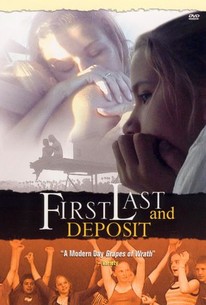
I’m surprised at how powerful this unassuming digitally shot no-budgeter turned out to be. Directed by DV auteur Peter Hyoguchi (FAGIN’S CHILDREN), it’s the gritty account of a young girl (Jessica White) facing the harsh realities of homelessness in affluent Santa Barbara, CA. She and her mother (Sara Wilcox) get kicked out of their apartment and are forced to live in a junky ‘84 station wagon, at least until it gets stolen by skateboard punks—and from there things only get steadily bleaker. There’s a somewhat happy ending, but it can’t erase the rawness and desperation of all that came before. The whole thing is staunchly reality-based and extremely well-acted (for the most part, anyway), although the technical qualities are all-but non-existent, with dialogue frequently drowned out by background noise and the camerawork forever wobbling all over the place. Jittery handheld visuals can and do lend naturalism and immediacy, but this is a definite case of too much of a good thing!
11. POSSIBLE WORLDS
Probably the most striking film to date from the famed theatrical impresario/sometime moviemaker Robert LePage. In this loopy sci fi-tinged phantasmagoria a man is found in an apartment with his brain removed from his skull; the film then proceeds in the form of trippy flashbacks of the guy’s life, intercut with the police investigation into the killing. We see the man (Tom McCamus) meeting Tilda Swinton, falling in love and getting rejected by her in various alternate realities. It seems he’s trapped in some sort of hallucinatory fugue peopled with numerous bizarre characters, most notably a shady scientist and a pair of maladjusted workers who repeat the same three words over and over. The film has a startling, discordant flow reminiscent of Alain Resnais’ classic JE T’AIME, JE T’AIME, although the real highlight, as in all of LePage’s films (which include LE CONFESSIONAL, POLYGRAPH and THE FAR SIDE OF THE MOON), is the impeccably sleek visual design—yet it (for once) contains a narrative that fully matches the pictorial majesty.
 10. KURUKSHETRA
10. KURUKSHETRA
Bollywood action movie madness! Whatever KURUKSHETRA’S status among Bollywood fanatics may be (from what I understand it’s not too highly regarded), I like it because, simply, it’s one of the most entertaining films I viewed in 2000. It is admittedly somewhat slow to get started—the main plot strand doesn’t commence until 40 minutes into the film—but once it does it becomes a prototypical example of mile-a-minute Bollywood bliss, with gratuitous brutality, panting romance, large-scale musical numbers and melodrama so overripe it borders on surreal. Plus, KURUKSHETRA also boasts a real-life political conscience of the type that has begun to slowly-but-steadily creep into the escapist-or-bust Bollywood scene. It’s about an absurdly honest cop (Sanjay Dutt) up against a corrupt superior (Om Puri) whose son has raped a woman. Will our hero prevail over his powerful nemesis? With a plot twist (or two) occurring every couple minutes or so, it’s certainly enjoyable finding out!
9. DARK DAYS
A fascinating, if crude, black and white documentary about the so-called “mole people” who for years lived in relative harmony in abandoned subway tunnels under the streets of NYC. British director Marc Singer, utilizing real homeless people as his crew (which explains the technical crudity), superbly captures the day-to-day lives of these people, which consist of scavenging above ground during the day before returning to the darkness of “home.” Foraged strips of nailed-together wood serve as houses, which often contain working TVs and stoves—one guy even builds a pen for his dogs. In short, what we see here is a community like any other, although a lot darker (indeed, most of the film is lit only by the light from Singer’s camera). Eventually, though, the city forces these folks out of their subterranean dwelling—it’s a good thing, then, that we’ve got this film, a profoundly haunting and unforgettable peek into another world.
8. CHEATERS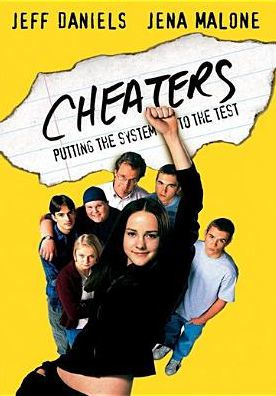
A made-for-HBO flick that, like most M-F-HBO fare, was based on actual events and has a cuss word in seemingly every sentence. The inspiration was the scandal that rocked a Chicago high school in 1995, when it was discovered that a group of students won the academic decathlon by obtaining a copy of the test beforehand and memorizing the answers. The flick, written and directed by John Stockwell and headlined by Jeff Daniels and Jena Malone, adroitly takes us through all the scandal’s major events, but what makes it brilliant is the way it forces us to confront the various issues involved. It’s not a simplistic moral tract, but, rather, a complex depiction of people under pressure and the corrupt system that forced them to make some pretty extreme choices…in short, this is an uncompromising look at how the world works.
7. MAELSTROM
Better known as That Movie Narrated by a Fish, this is a near-masterpiece from Quebec: a touching, endlessly imaginative, deeply innovative work that defies easy categorization. As mentioned above, it’s headlined by a talking fish, plucked from its natural habitat and about to have its head chopped off. Before it does it relates a story of a young woman (the gorgeous Marie-Josee Croze) who becomes plagued with guilt after hitting an ancient fisherman with her car. She eventually drives her car into a reservoir, but survives this apparent suicide attempt, and ultimately atones for her crime by romancing the codger’s son. Writer-director Denis Villeneuve (yes, the same Denis Villeneuve who’d go on to direct BLADE RUNNER 2049) creates a rich and seductive universe of beauty and shock, spiced with a goodly amount of lighthearted whimsy. His narrative and filmmaking techniques never take an expected turn, and while the at-times somnambulant pacing leaves something to be desired, I found the film mesmerizing from start to finish. Plus, Croze is quite fine in the lead role, with a wealth of charisma to go with her beauty (not to mention a fair amount of nudity), and the animatronic fish narrator is quite memorable in its own right.
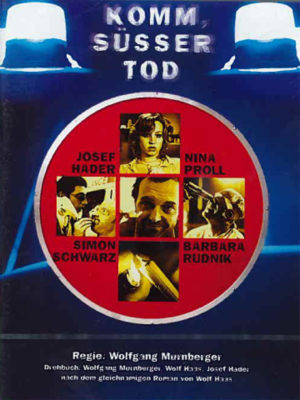 6. COME SWEET DEATH (KOMM, SUSSER TOD)
6. COME SWEET DEATH (KOMM, SUSSER TOD)
Who’d have thought this Austrian action-comedy, which appears to have been intended as little more than a Euro-styled COP OUT, would turn out to be one of the previous decade’s most stylish and invigorating pieces of filmmaking? Quite popular in its native Austria, COME SWEET DEATH was the first of the Inspector Brenner film series, all of whose entries were adapted from novels by Wolf Haas, directed by Wolfgang Murnberger and headlined by Josef Hader. The latter plays Simon Brenner, a worn-out ex-detective working as an ambulance driver and smoking copious amounts of weed—but it’s not long before Brenner is called back into the fray when a succession of corpses begin turning up and the evidence seems to point to Brenner’s own department. The narrative is merely serviceable, with Murnberger wisely keeping his focus on the unerringly crisp and playful visual design and overall atmosphere of overt quirkiness. Particularly idiosyncratic touches include the poetic voice-over narration by a never-seen individual who speaks in a near-whisper, and a sex scene in which standard movie coitus etiquette is reversed by having the participants’ heads covered by a blanket as their bare asses pump away in full view.
5. CHUCK & BUCK
A strange, twisted, disarmingly convincing black comedy from director Miguel Arteta, writer/star Mike White and stars Chris and Paul Weitz. Chuck (Chris W.) and Buck (White) were childhood pals until the former grew up and became a Hollywood big-shot while the latter stayed in a state of arrested pre-adolescence. When Buck’s mother dies he decides to look up his old friend and resume their old-timey activities, which, we learn, weren’t entirely innocent. What ensues is an unpredictable and disturbing game of cat-and-mouse, with Buck, in a desperate attempt at reeling in his old friend (who, not surprisingly, wants nothing to do with him), putting on a stage play with his inheritance money. Arteta has a superb touch with all the actors, but the movie’s backbone is White’s unforgettable characterization of Buck, the child-man who, while remaining enormously sympathetic throughout, has a distinct aura of unpredictability and possibly even danger; is this guy just slow or is there something a little bit demented working behind those eyes? Terrific film, but I’ll have to complain about the digitally shot cinematography that, in the manner of quite a few early-00s indies (the aforementioned BAMBOOZLED, PIECES OF APRIL, IVANSXTC, etc.), was transferred to 35mm film, resulting in a downright ugly, washed-out visual palette that severely diminishes the overall impact.
4. WERCKMEISTER HARMONIES (WERCKMEISTER HARMONIAK)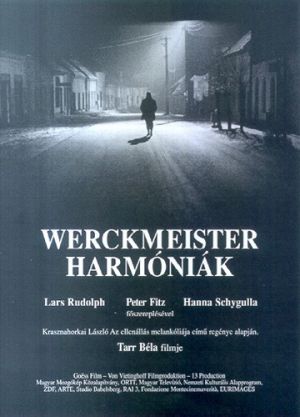
This film typifies everything we’ve come to expect from Hungary’s Bela Tarr: black and white film stock, expansive visuals, glacial pacing and a profoundly bleak arc. It’s about the arrival of God, who takes the form of a stuffed whale toted by a sleazy traveling circus, in a sleepy provincial town whose inhabitants promptly disintegrate into violence and anarchy. Tarr doesn’t offer any explanations for the oft-bizarre actions of his characters, simply letting his many virtuoso tracking shots speak for themselves—which, it turns out, is more than enough. The film was lensed by a dozen cinematographers, yet the incredibly stark, shadowy black and white photography has a flow and consistency worthy of Greg Toland (quite a compliment!). It also boasts a great, mournful, haunting music score by Mihaly Vig. Yes, the proceedings, in common with those of most of Tarr’s films, are laughably pretentious at times, but I had trouble tearing my eyes from the screen.
3. POLA X
A Leos Carax flick that, it appears, is widely viewed as failure. I don’t concur, although my tastes in Carax films tend to run counter to those of most people (I don’t much like his early films BOY MEETS GIRL and MAUVAIS SANG, nor his “masterpiece” HOLY MOTORS). I say the haunting and seductive POLA X is one of his most memorable efforts, in fact! It’s based on Melville’s PIERRE: OR THE AMBIGUITIES (whose French title is PIERRE: OU LES AMBIGUITIES, giving us P-O-L-A, while the X apparently stands for the tenth screenplay draft), and tells the nutty story of a writer (the late Guillaume Depardieu) forsaking his privileged life to romp with his long-lost sister (Yekaterina Golubeva) in the gutters of Paris. As with Carax’s previous effort THE LOVERS ON THE BRIDGE, it’s a stunningly visualized work set in a terrifically gritty yet magical landscape. Especially memorable bits include a surreal meeting in a nighttime forest, a hard-core sex scene (one of the hottest you’ll see) and the final apocalyptic shoot-out. See also ANNETTE.
2. THE ISLE (SEOM)
This film served as my introduction to the joys of Korean cinema, and the peerlessly idiosyncratic universe of writer-director Kim Ki-Duk. Like most of Kim’s subsequent films, THE ISLE is ultra-slick and stylish, boasting terrific performances and a flawlessly rendered atmosphere of creeping menace. The setting is a compelling one I definitely haven’t seen before: a community whose inhabitants reside in floating houses on a vast lake, spending their days fishing and soliciting the local prostitutes. Much of the film’s first half is spent detailing life in this quiet milieu through a superbly orchestrated series of wide shots. But when a disgraced cop tries to commit suicide with a fishhook (a truly excruciating scene), he’s literally reeled in by a mute prostitute who proceeds to induct him into a world of destructive sex. This all plays like an unholy collaboration between Andrei Tarkovsky and Dario Argento, and remains one of Duk’s most impressive accomplishments.
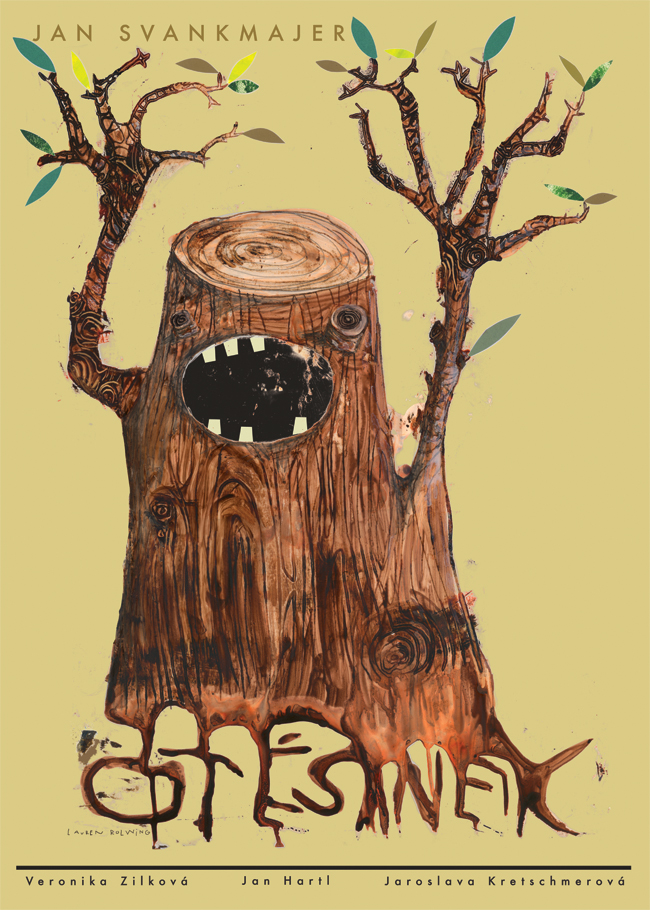 1. LITTLE OTIK (OTESANEK)
1. LITTLE OTIK (OTESANEK)
This is the closest the incomparable Czechoslovakian animator/director Jan Svankmajer’s has ever come to making a commercial film. LITTLE OTIK isn’t quite as potent as Svankmajer masterworks like ALICE and FAUST, but it is a uniquely compelling, thought-provoking experience that far outdoes most modern “cult” films in creepiness and surreal outrage. A seemingly happy couple, unable to conceive a child, find themselves “blessed” when a wooden figure the man carves out of a tree stump comes to life. Anyone familiar with Czech folklore will recognize the story of Otesanek, the wooden baby who terrorizes a town, devouring everything—and everybody—in sight until an old lady, pissed that he ate her cabbages, cuts him open with a hoe. Svankmajer hits all the story’s bases while injecting his own unique twists into the mix. The best scenes are those where Svankmajer is in his element, such as the side-splitting TV commercials that turn up throughout, and an early hallucination with a guy fishing babies out of a bucket and wrapping them in newspaper for a gaggle of eager customers. The film may ultimately be a bit overlong, but it’s prime-grade Svankmajor from start to finish—which is to say an absolute must see!
